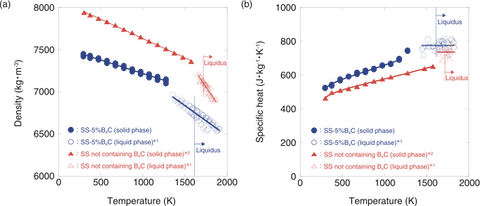
Fig.7-7 Density and specific heat of stainless steel (SS) and SS containing boron carbide (SS-B4C)
The long-term coolability of degraded core materials inside the reactor vessel must be ensured in a severe accident.
Although the melting temperature of boron carbide (B4C), which is used as a control rod material, is 2723 K, it could melt below its melting temperature (i.e., undergo liquefaction) due to chemical interactions caused by contact with stainless steel (SS), which is used in the cladding tube. The produced liquefied stainless steel containing boron carbide (SS-B4C) is expected to reduce the temperature increase of the degraded core material by moving throughout the core and mixing with other degraded core materials. JAEA has been developing calculation models to explain this liquefaction and relocation behavior. However, thermophysical property data (density, specific heat) of SS-B4C are needed over a wide temperature range covering the solid-to-liquid phases at various B4C concentrations to complete the calculation models. Therefore, we have been collaborating with other research institutes to maintain and expand the thermophysical properties database and improve the severe accident analysis code.
Thermophysical data was obtained for SS-5%B4C, which is expected to have the lowest melting temperature in various SS and B4C blends; the measured density and specific heat of SS-5%B4C are shown in Figs.7-7(a) and (b), respectively. The addition of 5% B4C to SS caused the density to decrease by approximately 6% at room temperature, although this difference decreased as the temperature was increased within the solid and liquid range. The presence of 5% B4C in SS caused the specific heat to increase by approximately 7% at room temperature, although the specific heat of both materials in the solid state had a similar temperature dependence. On the other hand, the specific heat did not vary with temperature once in the liquid phase. Overall, we successfully acquired the thermophysical property data of SS-5%B4C over a temperature range encompassing both solid and liquid phases. Future experimental work will focus on evaluating thermophysical properties of various B4C concentrations in SS. Together, these efforts will allow for a thermophysical property database that can be used to develop and improve calculation models used to analyze severe accidents.
The present study is the result of the “Technical Development Program on a Fast Reactor International Cooperation, etc.”, entrusted to the JAEA by the Ministry of Economy, Trade and Industry (METI), Japan.
(Toshihide Takai)
*1 Fukuyama, H. et al., Thermophysical Properties of Molten Stainless Steel Containing 5 mass % B4C, Nuclear Technology, vol.205, issue 9, 2019, p.1154-1163.
*2 Japan Nuclear Energy Safety Organization, Project of Integrity Assessment of Flawed Components with Structural Discontinuity (IAF) Material Properties Data Book at High Temperature for Dissimilar Metal Welding in Reactor Pressure Vessel, JNES-RE-2012-0024, 2013, 122p.